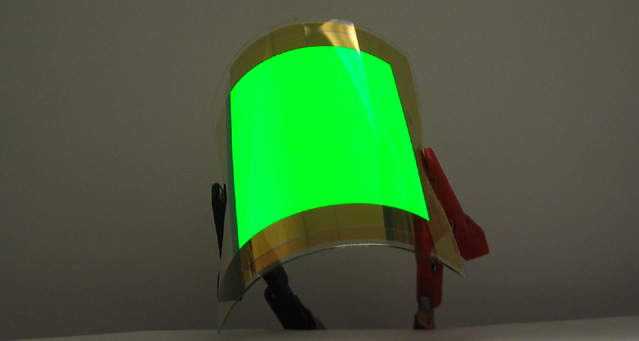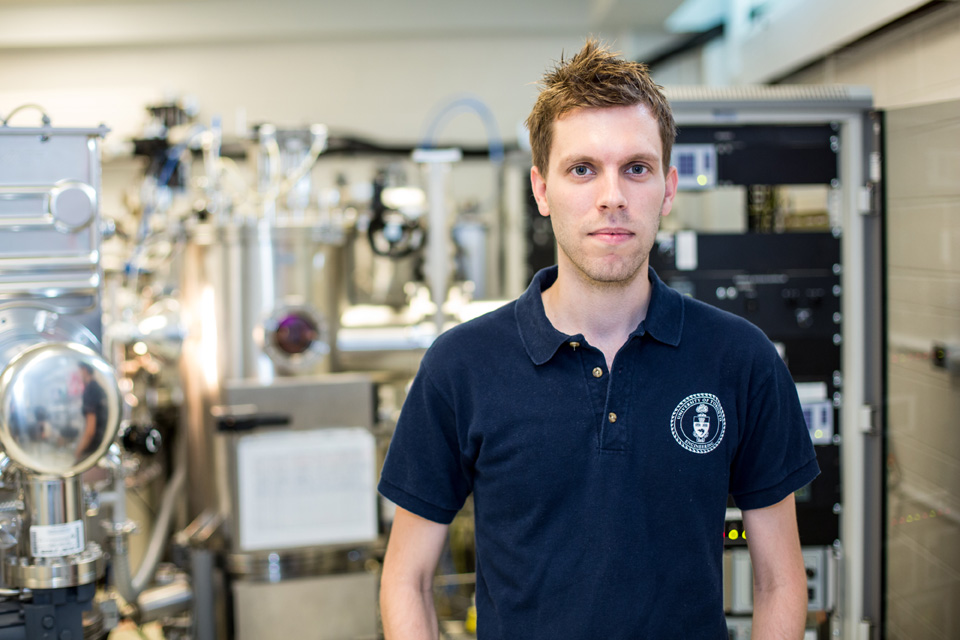

Photo (left): U of T-developed world’s most efficient flexible OLED
Photo (right): Michael G. Helander, PhD candidate & Vanier Canada Graduate Scholar
December 7, 2011
In a recent interview with phonearena.com, Michael G. Helander(EngSci 0T7, MSE PhD Candidate & Vanier Canada Graduate Scholar), discusses the latest breakthrough by the Organic Optoelectronics Research Group: the world’s highest-efficiency flexible Organic Light-Emitting Diode (OLED) ever built on plastic.
“One of the big advantages of moving to flexible plastic substrates is not the flexible form factor, but rather that the displays can be made physically thinner,” says Helander in the interview. “Currently, one of the bulkiest parts of a mobile display is the glass substrate itself.”
“One of the big advantages of moving to flexible plastic substrates is not the flexible form factor, but rather that the displays can be made physically thinner.”
“For years, the biggest excitement behind OLED technologies has been the potential to effectively produce them on flexible plastic,” says Professor Zheng-Hong Lu, Canada Research Chair in Organic Optoelectronics and head of the research group in a separate interview. “This discovery, unlocks the full potential of OLEDs, leading the way to energy-efficient, flexible, and impact-resistant displays.”
The results of this work was published in Nature Photonics: Unlocking the Full Potential of Organic Light-Emitting Diodes on Flexible Plastic on October 30, 2011.